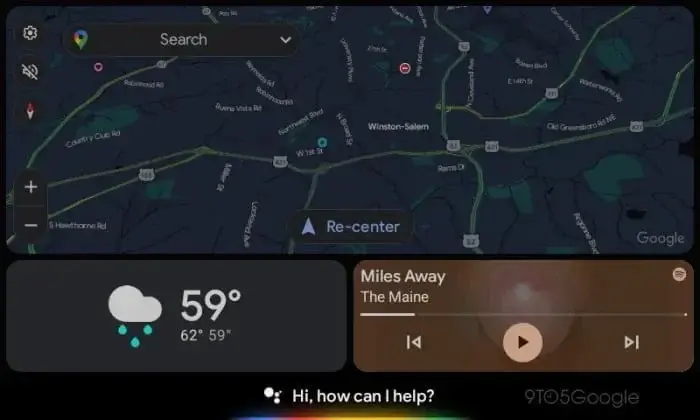Key Takeaways
1. Samsung is developing a new interface called Auto DeX to replace Android Auto.
2. Auto DeX features a user interface similar to infotainment systems, allowing quick access to apps and displaying up to three apps simultaneously.
3. The interface includes a central map display and music controls, but the bottom taskbar may be revised in the final version.
4. Auto DeX is expected to be compatible with over 8,500 vehicle models from more than 120 manufacturers, using a receiver app for connection.
5. It may also work in cars that don’t officially support it, allowing users to display the interface on their smartphone screens.
Samsung seems to be putting a lot of effort into creating a new option instead of Android Auto. Recently, @GalaxyTechie has found some early details about Auto DeX within the One UI code. The image shown below indicates that Samsung has designed a user interface similar to those found in infotainment systems. On the left side, there is a dock that enables quick access to commonly used apps, while allowing up to three apps to be displayed at once.
Interface Details
In the displayed image, the center space appears to be for a map, while the right side features a shortcut for a music playlist, along with a music control widget positioned above it. The taskbar located at the bottom of the screen seems to be of little use due to the vertical taskbar displaying the time, a list of apps, and a shortcut to the app drawer on the left side; this may possibly be left out in the final version. Samsung Auto DeX is anticipated to be compatible with over 8,500 vehicle models from more than 120 manufacturers, although it’s not clear how deeply integrated the system will be. To ensure wide compatibility, Samsung is implementing a receiver app that can be installed in the vehicle to connect with Auto DeX.
Compatibility and Features
Auto DeX might also be usable in cars that don’t officially support it, with “a few tricks”. According to 9to5Google, it’s thought that Auto DeX could be shown on the smartphone’s screen. With an appropriate mount, this could allow the phone to take the place of a car’s infotainment system—a capability that Android Auto has lost in the past years. While Auto DeX is not meant to take over Android Auto’s role, it aims to provide users with an alternative that will be accessible in more areas and vehicles compared to Google’s solution.
Source:
Link



